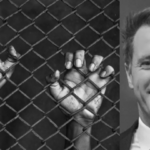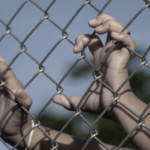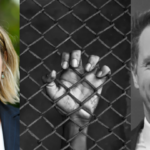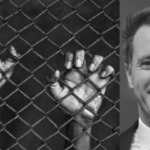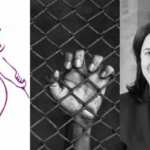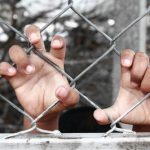Victoria Joins the Nationwide Youth Crime Crackdown That Ultimately Targets First Nations Kids
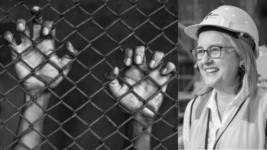
Victoria premier Jacinta Allan announced on Tuesday, that her government would be adding amendments to its huge close to 1,000-page-long Youth Justice Bill 2024 later that day to toughen bail laws, and she added that she’d no longer be raising the age of criminal responsibility to 14.
The Youth Justice Bill was introduced in June, and it had a progressive reputation about it as it was, and continues, to raise the age of criminal responsibility to 12, which was supposed to be a first step in raising it to 14, in line with a long running civil society campaign to see this reform actualised.
The bill also holds provisions to establish schemes for youth falling foul of the law to facilitate diversion away from the criminal justice system, such as youth warnings and cautions, early diversion conferences and provisions for court ordered diversion from criminal proceedings.
Allan, however, shot down any misconception that the Victorian government was progressive on youth justice, and instead she’s jumped on the tough-on-youth-crime bandwagon that many of her counterparts in other jurisdictions have been progressing.
And in the Australian setting, although it’s not made specifically clear in the nightly news, any crackdown on youth crime, especially the youngest kids who end up in this nation’s child prisons, are predominately and disproportionately First Nations youth.
So, despite prime minister Anthony Albanese having taken office in May 2022, promising to champion Indigenous affairs, what has actually been occurring under his watch is a growing trend amongst state and territory governments to crack down on First Nations youth more severely.
Locking up kids
Allan’s predecessor, former Victorian Labor premier Dan Andrews committed to raising the age in a staggered manner in April last year, outlining that this year would see it raised from 10 to 12 years old, and that would then be followed by the age being upped to 14 by 2027.
As Victorian police minister Anthony Carbines explained, during his 19 June second reading speech on the bill, the research has long shown that children under the age of 14 have not developed the cognitive ability to form criminal intent or understand the nature of committing a crime.
Up until recent years, the age of criminal responsibility had been 10 in all Australian jurisdictions. The Standing Council of Attorneys General, a body of AGs from all jurisdictions, began considering raising the age in 2018, and in releasing its 2023 report on the matter, it came to no clear conclusion.
Indeed, considering the nature of the practice of locking up kids disproportionately affects Aboriginal and Torres Strait youths, the decision not to raise the age can appear to be the way in which it can be used in a targeted manner against First Peoples children.
Ten continues to be the age of criminal responsibly in NSW, Queensland, Western Australia and South Australia. The NT raised it to 12 after a Royal Commission into the barbarity that was being committed upon Aboriginal kids in that jurisdiction’s child prisons called for the change.
While the ever-progressive ACT government raised the age of criminal responsibility to 12 last November, and this will increase to 14 next year. And Tasmania has also committed to raising the age to 14.
So, on Tuesday, Allan made no attempt to roll back the raising of the age to 12, as per the Youth Justice Bill, which had only just passed the Victorian lower house on 1 August. But she backflipped on continuing on to take the second step to 14, and rather announced a range of new tough bail laws.
Youth bail crackdowns are trending
As is common in the equation that state’s take when cracking down on kiddie crime, a number of violent incidents are pointed to as reasons to take a tough-on-youth-crime approach, and another common feature when this has occurred of late is that it’s bail laws that are then strengthened.
The new Youth Justice Bill amendments, which are to be inserted into the Bail Act 1977 (VIC), include that an authority should refuse bail to an individual who is accessed to be a risk of committing a schedule 1 or schedule 2 crime, which are listed serious criminal offences, if allowed out on bail.
And a fresh offence will be created under new section 30A of the Bail Act, which involves committing a schedule 1 or schedule 2 crime whilst on bail. And if passed, it will carry up to 3 months imprisonment and/or a fine of $5,927.
While a preexisting law that permits the Director of Public Prosecutions to revoke bail, will be extended to cover when it’s believed on reasonable grounds that an individual has committed or is likely to commit an offence on bail or has breached or is likely to breach a condition of their bail.
Targeting First Nations youth
The NSW Minns government passed a set of tough-on-youth-crime amendments targeting First Nations youth in April, which included tightening bail laws if specific crimes are committed whilst on conditional release, as well as increasing penalties for bragging online about committing such crimes.
Queensland Labor twice suspended its Human Rights Act 2019 (QLD) last year to pass youth crime laws, which were obviously rights breaching in effect.
In the first instance this was to create a youth breach of bail offence and in the second it was to make locking up kids in adult watchhouses lawful.
While it was the Northern Territory that kicked off the crack down on youth bail laws in 2021, with measures that saw bail revoked for serious offences committed whilst on conditional release, as well as a broadening of offences that bail automatically doesn’t apply to.
On an average day in the NT in the week ending in May, there was one non-Indigenous youth in its child prisons compared with 35 Aboriginal kids, while in NSW last June, 58 percent of the youths in child facilities were First Nations kids, yet they only make up about 5 percent of the populace.
The Australian Institute of Health and Welfare Youth Justice in Australia 2022–23 report outlines that on an average day that year, 483 First Nations youths were detained in gaols, which accounted for 58 percent of all inside, yet these kids only make up about 6 percent of youths in that age bracket.
So, now it seems Victoria’s taking the same path other states, with the purpose of targeting a small group of First Nations teens, via the increasing of their chances of ending up on remand, as well as creating crimes to put them in there, almost as if this is a prescribe method.


